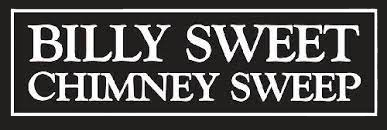by Billy Sweet | Dec 13, 2015 | Winter Storm Fireplace
In Boston, we are used to heavy snowstorms and blizzards during the winter. In January and February of 2015, we experienced a blizzard that lasted over six weeks and dumped a record 108.6 inches of snow in our area. Even though long-time residents know how to be ready for these types of storms, Billy Sweet Chimney Sweep would like to remind you of how you can prepare your fireplace so that you will not have to worry about being without heat when the power goes out during a blizzard.
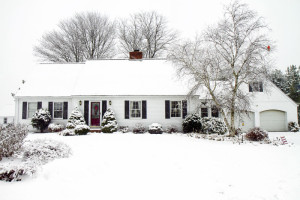
Schedule a professional chimney sweeping and inspection before winter arrives.
This maintenance task will take care of removing all of the accumulated creosote from the inner walls of your chimney, which increases fireplace safety and reduces fire hazards. During the inspection, our Chimney Safety Institute of America (CSIA)-certified chimney sweeps will examine the condition of your fireplace and chimney to be sure everything is working safely. If we find any damage, we will make recommendations of the repairs that are necessary for you to use your fireplace safely.
Check the gaskets to see if they need to be repaired or replaced.
You want to ensure that the gaskets on your fireplace doors, damper, and ash dump are providing an effective seal. According to Cabin Living, without a proper seal, too much air can leak into the firebox and cause overfire and permanent damage to your fireplace.
Have the blower cleaned.
If your fireplace is equipped with a blower, you should clean off the dust and dirt from it to protect the balance of the blower. When the blower has too much dust accumulation on its blades, the balance can change and cause the bearings to wear out prematurely. Your fireplace blower typically will not have a filter to keep dust off, so you need to check it regularly to be sure it is clean.
Replace broken or deteriorated bricks in the lining.
When the brick lining is so damaged that it has deteriorated so much that the steel body of the firebox is exposed, the high temperatures can lead to permanent damage. Be sure the bricks are in good shape so you will not have to worry about damage occurring that could make your fireplace unsafe.
Billy Sweet Chimney Sweep is here to help you prepare your fireplace for dangerous storms this winter. Contact us to schedule an appointment for a chimney sweeping and inspection so that you can stay warm and safe this winter.
by Billy Sweet | Nov 28, 2015 | Freeze Thaw Cycle
You’re likely familiar with the damage the freeze-thaw cycle can do to the roadways; it’s what causes pot holes to appear each year! Water makes its way into the tiny cracks in concrete, asphalt, or stone. When the temperature drops, that water freezes and expands, causing the concrete, asphalt, or stone to crack or crumble. If you have a home with a masonry chimney, you should be aware that the freeze-thaw cycle can cause the same damage to your chimney’s bricks, concrete, and mortar.
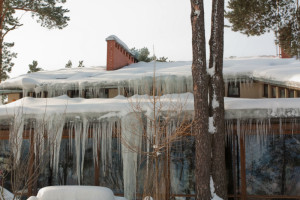
Water damage and your chimney
Water can cause many problems with your chimney. The freeze-thaw cycle can cause the mortar between your chimney to crumble; it can cause parts of your brick to flake off, which is referred to as spalling; and it can cause your chimney crown to crack and crumble. Over time, if water damage goes unaddressed, it can mean major problems for your chimney. Your chimney’s overall structure can fail, causing it to lean and become unsafe. A damaged chimney also will let water into the rest of your home, leading to water stains on your ceiling and walls, rotting wood on adjacent structures, collapsed hearth support, a damaged firebox, rusted fireplace accessories, and failing hearth structure.
Repairing water damage
The first step in repairing water damage is to find that damage. This is one reason your annual chimney inspection is so important. Your certified chimney technician can find signs of damage early, so that it can be repaired before minor water damage becomes major water damage. In many cases, it will take the work of expert masons, like those at Billy Sweet Chimney Sweep to repair your chimney’s water damage. We provide services such as tuckpointing, chimney crown repair and replacement, and removing and replacing spalling bricks.
Preventing water damage
When it comes to water damage and your chimney, an ounce of prevention is worth a pound of cure! Taking steps to prevent chimney damage now can save you from costly repairs later. Having a chimney cap installed atop your flue can help keep water from running down the interior walls of your chimney. Repairing a damaged chimney crown will keep water from running down the exterior sides of your chimney. It’s important to make sure the flashing around your chimney is secure, and if your chimney is located on a part of your roof that experiences a lot of rainwater or snow, a cricket — a tent-shaped piece of metal — can be installed to divert water away from the chimney. There also are waterproofing sealants that can be applied to your chimney. Those sealants keep water from seeping into your chimney’s masonry while still allowing your chimney to expel the gases created by your fires.
Ultimately, the key to protecting your chimney from water damage is working with your certified chimney sweep to make sure that any problems are caught and addressed early before you have major chimney damage. If you’re overdue for an inspection, or if you’ve noticed cracking masonry on your chimney, call the experts at Billy Sweet today. We also can talk to you about waterproofing applications to protect your chimney.
by Billy Sweet | Jun 15, 2015 | Portland Info
Portland, Maine is such a special place because it is Authentic. The Visit Portland website describes Portland, “With its heady mixture of artistic and outdoor adventures, our region is stylish and sophisticated, yet remains genuine and unpretentious, a place where grey flannel and plaid flannel coexist companionably. And underlying the latest tech, fashion, and culinary scene is a deep sense of continuity” and the entire staff of Billy Sweep Chimney Sweep is in total agreement. We love Portland!
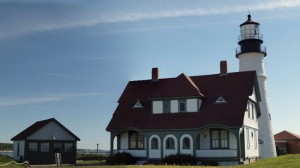
Portland was originally called Casco during the 1600s and went through several name changes until 1786 when the town was renamed Portland. It was a rail town in the day and an accessible seaport for Canadian exports. The population has grown from approximately 2200 in 1790 to over 66,000 today.
There is so much to see and do in Portland that no one of any age, visitor or resident alike, will ever be bored. Portland’s beautiful island setting offers unique adventures. Whether you are exploring by land or sea in a trolley, ferry, vintage fire truck, or schooner you will find the area breathtaking. Lighthouse tours, art tours, food and beverage tours, and historical tours offer days of fun, education, and entertainment. Portland is a cyclist’s dream. You can even explore Portland aboard a vintage lobster boat. Did someone say lobster? Seafood doesn’t get any fresher and delicious than that which is caught in Casco Bay! You can catch your own during a chartered excursion or enjoy your seafood prepared by the world renowned chefs throughout the area. Besides first class food, Portland’s breweries and wineries have been drawing residents and visitors to taste local beer, wine, and there is even a local distillery of vodka in nearby Freeport.
What goes best with food? Entertainment, and Portland offers a variety of venues including Port City Music Hall, One Longfellow Square, and Portland Ovations. Kids love Funtown Splashtown U.S.A..
History buffs love spending time at the various museums and historical sites in Portland. The Maine Historical Society is located in Portland, as is the Maine Narrow Guage Railroad Company & Museum and the Museum at Portland Head Light which is the oldest lighthouse in Maine, The Portland Observatory Museum is a national historic landmark and is the only signal tower in America. Portland is especially proud of its new Science Center that is “illuminating minds”.
“Uptown” is known as the “artsy” side of Portland, while “Old Port” is known for its entertainment, clubs, and the beer gardens. Sports lovers will want to catch a game when the Portland Pirates (the AHL affiliate of the Florida Panthers), Maine Red Claws (the NBA affiliate of the Boston Celtics) or the Portland Sea Dogs (the AA affiliate of the Boston Red Sox) are playing at home.
When winter comes to Portland, it’s time to get cozy and warm in this picturesque town. There is cross country skiing in the local parks, and Deering Oaks Park offers ocean side skiing and skating adventures. As you can imagine, art and artists are prolific in Portland. Well-known artists such as Homer, Marin, and Jamie Wyeth have strong ties to Portland. To learn more about their inspiration and careers, as well as view beautiful works of art, be sure to devote some time to spend along the Maine Art Museum Trail.
There is beauty and and art to most everything in life and Billy Sweet Chimney Sweep knows Portland is a very special place and we are proud to serve its residents.
by Billy Sweet | May 30, 2015 | North Shore Info
North Shore, Massachusetts encompasses the area between Boston and New Hampshire. The area is beautiful and coastal. Describing the North Shore must include a special and rich culture in addition to stunning and diverse geography. That’s why the entire staff of Billy Sweet Chimney Sweep loves serving the North Shore.
Here is a list of the cities and towns included in the North Shore area:
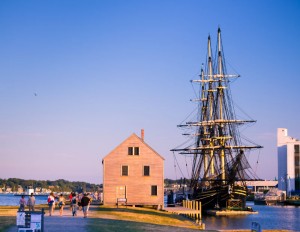
- Amesbury
- Beverly
- Boxford
- Danvers
- Essex
- Georgetown
- Gloucester
- Groveland
- Hamilton
- Haverhill
- Ipswich
- Lynn
- Lynnfield
- Manchester
- Marblehead
- Merrimac
- Middleton
- Nahant
- Newbury
- Newburyport
- Peabody
- Rockport
- Rowley
- Salem
- Salisbury
- Saugus
- Swampscott
- Topsfield
- Wenham
- West Newbury
Geographically, the region has a rocky coastline, marshes, wetlands, beaches, and harbors perfect for recreation, wildlife, and inter-coastal commerce.
One of the best known cities in the North Shore region is Salem, well known for the tragic Salem Witch trials of 1962. The Salem Witch Museum provides an insight to that unique time in our history. The Peabody Essex Museum includes the Ying Yu Tang house which was originally located in southeastern China and depicts the life of the many generations of the Huang family who lived in the home for over 200 years. Gloucester, a fishing town, was venerated in “The Perfect Storm” by Sebastian Junger. Newburyport is the quintessential coastal town with a boardwalk, red-brick downtown, and active commercial wharf. The North Shore area includes activities such as whale watching and harbor cruises, beaches and lighthouses, theatre and restaurants, contemporary and historic architecture. And yet, there is so much more.
Sports fans of the North Shore breathe black and gold in honor of their beloved Bruins. Babies in the North Shore towns (or to parents who once lived in North Shore) are mysteriously born with a Red Sox logo tattooed on their chest. We’re kidding, but the dedication and spirit of Red Sox fans is undeniable. And no matter what happens, The New England Patriots will never lose favor with their devoted fans in North Shore even when the rest of country is badmouthing the team.
Patriotism is also abundant in the area. North Shore is the birthplace of the U.S. Navy and Coast Guard. The Atlantic Ocean fosters international commerce as well as provides the freshest and finest seafood in America, which diners enjoy along with their favorite craft beer. Local breweries are abundant. Donut aficionados say the only donut worth eating comes from Dunkin Donuts. If you are lost and ask for directions, if you are told “it’s just past the Dunkin Donuts”, you better ask someone else. Dunkin Donuts is so popular in North Shore you will find one on practically every street.
Residents of North Shore speak with a unique Revere accent. The surest way to unintentionally insult a resident of the North Shore is to remark on their “Boston” accent. It’s not Boston; the speech pattern is a local dialect exclusive to the North Shore.
Ultimately, it’s the people who make the North Shore so special, it’s always been about the people and always will be. Past and present residents of North Shore are strong, determined, loyal, full of community spirit, enterprising, generous, and fun loving. The people of North Shore have learned from the mistakes of their ancestors and work diligently to secure a prosperous and praiseworthy future for generations to come.
“We love serving the North Shore”, is the mantra of the team of Billy Sweet Chimney Service and are proud to bring our chimney services to its residents.
by Billy Sweet | Mar 27, 2015 | Carbon Monoxide Poisoning
Carbon monoxide is a dangerous gas that can cause poisoning when you are exposed to it. It is a particularly dangerous threat because it is odorless, colorless and otherwise undetectable to the naked eye. When you are exposed to carbon monoxide you inhale the fumes, which prevents oxygen from reaching your organs. The most important thing you can do to protect you and your family from carbon monoxide dangers is to prevent exposure in the first place.
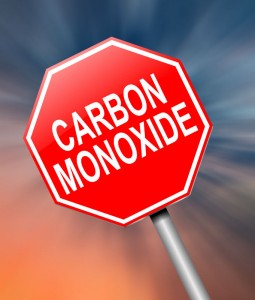
How Does Carbon Monoxide Poisoning Occur?
Carbon monoxide poisoning occurs in several ways, but in residential homes the most common way is through the misuse of heating appliances. In homes where wood-burning heating appliances are used, by-products can be left behind in chimneys. Soot, animal debris and flaked off masonry can all lead to dangerous toxins being release inside the home. Additionally, homes that aren’t well-ventilated can lead to carbon monoxide poisoning because there isn’t efficient air-flow while heating appliances are in use. Lastly, misuse of heating appliances can lead to poisoning, especially if inappropriate materials are being used or the operator doesn’t understand all components of the appliance.
Damaged Chimneys Can Lead To Carbon Monoxide Dangers
In homes where chimneys are older or have not been properly maintained chimneys can become blocked or rusted and this can result in carbon monoxide and other toxins being released into the air. Backdrafting, a common occurrence when chimney dampers and flues are not operating properly, can also lead to carbon monoxide poisoning.
Symptoms Of Carbon Monoxide Poisoning
If you suspect you or someone in your home is suffering from carbon monoxide poisoning, look for these common symptoms:
- Headache
- Weakness
- Dizziness
- Confusion
- Loss of vision
- Loss of consciousness
While these symptoms may seem subtle, they are life threatening. If you see any of these symptoms, remove everyone from the area and get emergency medical care immediately.
Luckily for homeowners, there are ways to prevent carbon monoxide poisoning including:
- Invest in a carbon monoxide detector that will alert you if the dangerous gas is detected.
- Never use stand-alone heating appliances like space heaters in small, enclosed areas.
- Only use wood-burning appliances in well-ventilated areas.
- Make sure you understand how to operate ALL components of your chimney before you light your first fire.
- Only burn appropriate, chemical and paint free wood in your wood-burning appliance.
- Inspect your heating equipment before use to make sure it is operating properly.
The single most important thing you can do as a homeowner is have your chimney professionally swept and inspected at least once a year. Hire a professional and experienced chimney sweeping company like Billy Sweet Chimney Sweep serving the Boston, North Shore and Portland areas to inspect, repair and if necessary, rebuild your chimney. Having an airtight chimney with a working damper and flue is the best way to prevent carbon monoxide build-up from your heating system. Our certified chimney sweeps are ready to inspect your chimneys and recommend any necessary add-ons or repairs. Contact the best in chimney sweeping to keep your home free of carbon monoxide dangers.
